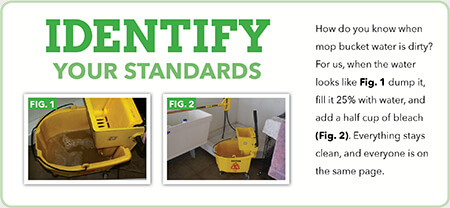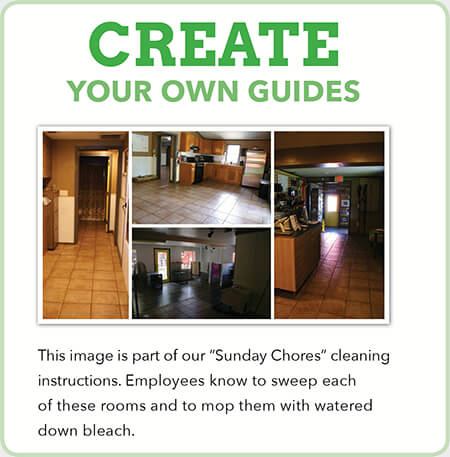
Training New Hires to Succeed
By Teena Patel
With proper training and careful preparation, you can confidentially add new employees to your facility without feeling like a babysitter.
But, first things first; stop treating your employees like children. Whether you own a doggy daycare, full service boarding facility, or both, you already know that it takes a great deal of expertise, education, and skill to keep beloved pets safe. Treating your employees like the valued assets they are will help them become top achievers. Your clientele will notice the difference, too.
Identify the Job
So you’ve hired your latest employee, and now it’s time to help them be successful in their career and in your business. First, identify the job that they’ll be doing. There are many different jobs in a pet care facility and it’s important to break things down to help understand expectations. Once there’s a level of mastery, they’ll identify the overlay between their own title and other positions.
What does their role look like? Remember, you may think the responsibilities are clearly defined, but never assume that you and the new hire are on the same page. When defining the job role, take it to the extreme: what exact physical, mental, and emotional abilities are needed to do the job right?
Physical, Mental, & Emotional Ability
Every facility is unique. For example, at the University of Doglando, the level of physicality isn’t the same as it would be in an indoor area. As an example, one new hire tracked her steps and found that she walked 15 miles in a single day! We had to ask ourselves, “Is this normal? Do all staff need to be able to do this?” We then had an experienced staff member wear a fitness tracker to compare, and she walked 6 miles. Now we understand the level of fitness required to do certain jobs efficiently.
Mental ability is also important. Caring for pets involves a huge amount of knowledge. Don’t ever say, “This isn’t rocket science.” Nope, this is rocket science – even cleaning the water bowls. For us, each staff member has a certain degree of mental acuity, and when we hire we make sure people want to learn and further their education. Why? Because we want staff to understand why things like cleaning are so important. They understand how parvo and distemper work, and requiring this level of knowledge and interest shows that every person isn’t cut out for every job. Determine the mental capacity required at your own facility because it will help you train employees more effectively.
Finally, we need to assess emotional ability. An influx of emotion prohibits some absolutely amazing employees from making the best rational decisions, for the business and for the pets they’re caring for. You may have an amazing employee who desperately wants to help every animal that they come into contact with, but that person needs to be able to control their emotions in order to be effective.
What Does the Hiring Process Look Like?
If you’re wondering, “How the heck am I going to access these different abilities?” there’s a straightforward solution: working interviews. After a successful initial interview, Doglando requires a 2–day working interview. This gives new hires the opportunity to truly SEE, and therefore fully understand, what working here is like. It has to be a mutual fit, because the way we do things isn’t for everyone. The way you do things at your facility likely isn’t for everyone, either.
After They’re Hired: Policies for Success
You’ve identified and hired the perfect new employee, but your work isn’t over yet. What policies do you have in place to ensure success? Your policies will be different from the facility next door, so determine what works best for your business.
For example, our staff aren’t allowed to bring their own dogs to work until the 3-month mark. They also have to meet all of their benchmarks, which gives us confidence that their personal dog won’t disrupt the experiences of other dogs.
We also want to build traditions and routines, and that requires careful consideration from the beginning. You can even go so far as to put paw prints on the floor, tracing certain paths until they become routine. This aids you in helping staff understand exactly what they should be doing. This detailed roadmap works well when combined with useful tools like detailed checklists throughout the facility. By enforcing these things every single day, new hires are more likely to succeed.
Paw prints and checklists are great, but your new hire training doesn’t end there. You need to develop a useful new hire orientation guide, too.

Importance of Comprehensive New Hire Orientations
Do you give your new hires a comprehensive orientation experience? We give all of our new hires a nice, hardcore orientation book. We dive deep into our corporate culture, including overall ethics and dog ethics. Because many of our dogs are here to learn and grow with us throughout their entire lives, explaining these philosophies creates excitement amongst staff. We also include the story of our facility. Our own employees admire our story and philosophy, and having this connection helps them identify similarities between themselves and the company.
You should also make your orientation guide and other new hire training materials available online. This lets you specifically identify what your standards are.
Consider a dirty mop bucket. Your definition of dirty might be very different from your new hire’s definition! Plus, by having your training materials online, you can more effectively cross–train employees to become proficient at different positions (everything is connected, after all).
When creating your own orientation guide and other training materials, share your beliefs and philosophies. This will create understanding and excitement, and the employees’ respect for their jobs will skyrocket in return. Your orientation guide is also the perfect place to explain your traditions and expectations.

The Importance of Excitement and Traditions
In my business, we have a lot of traditions. But, there’s one tradition we particularly love: the huddle. At the end of every single day, we do a group huddle. Everyone knows that they shouldn’t even start grabbing their belongings from their locker until we’ve done our huddle. We talk about things like giving clients a 30 second snapshot of their dogs’ day, how to properly mix cleaning solutions, and anything else that’s relevant.
It might sound like “over communication” is another tradition… and that’s purposeful. The importance of communication can’t be overstated — everyone needs to be on the same page. By taking control of the narrative, you’re also facilitating your employees’ behavior. Think of it as a game: as a facilitator, your goal is to keep everyone excited and engaged, but you can immediately see when staff aren’t engaged. This helps you get things back on track before they spiral out of control and that new employee makes a mistake.
Finally, Feedback
Are you giving employees regular feedback on their performance? This is so important – keep giving feedback until the learner (your employee) has changed their behavior. The principals are similar between dogs and humans. If you want a revision to take place, then you need to keep providing feedback.
At our facility we speak with new hires every single day, along with standard 30, 60, 90, and 1-year reviews. On top of that, we have a neutral person meet with staff every quarter. For us, this is my husband. He takes them out to lunch to learn more about who they are as people so that we can set them up for success. As a bonus, we’re also able to identify their future goals. This is important because we ideally want staff to grow with us, and we can’t help them grow if we don’t know their goals.
Existing staff aren’t left out in the cold, either. You can do daily lunch meetings and spend 15 minutes doing role playing (we like to get silly and have fun with this one!), doing a small giveaway, or revisiting a particular policy. Further, we hold monthly team meetings to help build the team environment. Emphasize how important each individual is to the team as a whole, too.
Training New Hires to Succeed is a Marathon, Not a Sprint
If all of this sounds like a lot to implement at once, don’t worry. Every business has to grow into its own system and put processes in place. Try tackling one piece at a time, like writing your company’s story, and then move on to the next piece, like a daily huddle. As long as you’re committed to learning and growing alongside your staff, you can effectively train new hires to succeed at your facility.


